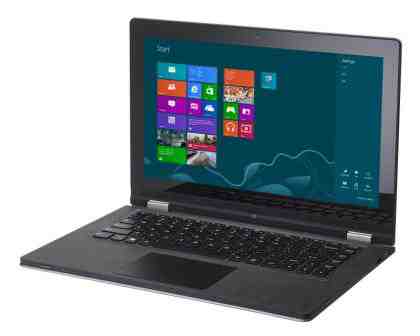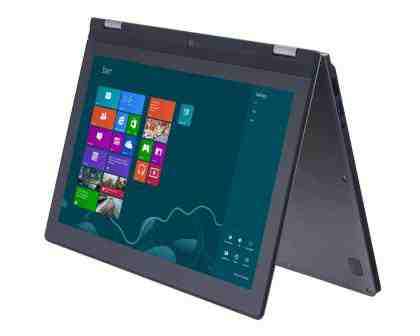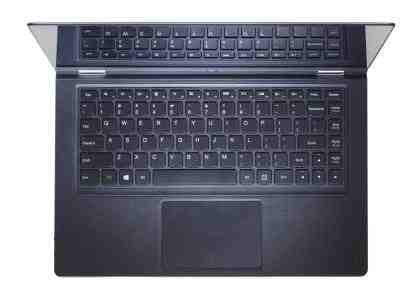The Lenovo IdeaPad Yoga 13 is perhaps the simplest laptop-tablet hybrid we’ve ever seen. It ditches the fancy sliding mechanisms and double screens found in other convertible Ultrabooks and instead gives you a super-flexible hinge that lets you fold the screen back 360 degrees. It’s incredibly sturdy, so you’ll need both hands to move it, and when closed it stands at a height of just 17mm.

Looks like a pretty typical Ultrabook ...
It’s light, too, making it slightly easier to hold than other tablet hybrids, but we still ended up resting it on our lap or up against our work surface if we were using it for any extended period of time. The fan between the screen’s hinges became warm on occasion, but we only noticed this when holding it vertically.
Its bright 13in IPS touchscreen has superb viewing angles, and its glossy display didn’t cause too many problems with reflections either. It’s not quite full HD, but its 1,600x900 resolution looks stunning regardless, with rich and vibrant colours and excellent contrast levels. Its screen rotation is also spot-on, something that can’t be said for the company’s other convertible Ultrabook, the Lenovo Thinkpad Twist , and there’s also a dedicated button to lock the screen orientation on the side of the chassis.

... until it pulls its party trick
When the screen’s fully folded back, the keyboard becomes the underside of the tablet. The Yoga 13 automatically disables the keyboard when it’s in tablet mode so that it has no effect, but it isn’t particularly comfortable having a keyboard on the rear of your tablet.
As with the Lenovo Thinkpad Twist , the Yoga 13 can also be used in Tent mode. We had to use it at a wide angle to type on the screen comfortably, but even vigorous screen-jabs didn’t make the Yoga 13 slip or fall.
In Laptop mode, the keyboard felt a little flimsy, and the keyboard tray often bounced along with the keys while we typed. This didn’t really detract from our overall typing experience, as the keys themselves were well-spaced and provided enough tactile feedback, but it was disconcerting to see so much flex on the keyboard of a laptop at this price.

We weren’t great fans of the all-in-one touchpad either. It has a super smooth finish that provides very little friction, and it sometimes failed to register our clicks. We’d recommend using a mouse instead, but consider using a Bluetooth mouse as the Yoga 13 only has two USB ports.

Indeed, the Yoga 13 has little in the way of connectivity. One of the USB ports is a faster USB3 port, but the other connections include just an SDHC card slot, a HDMI output and a combined microphone and headphone jack.
